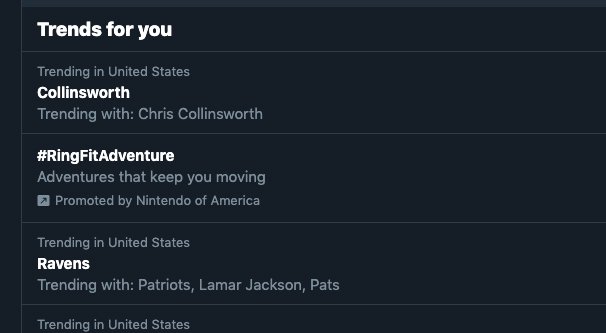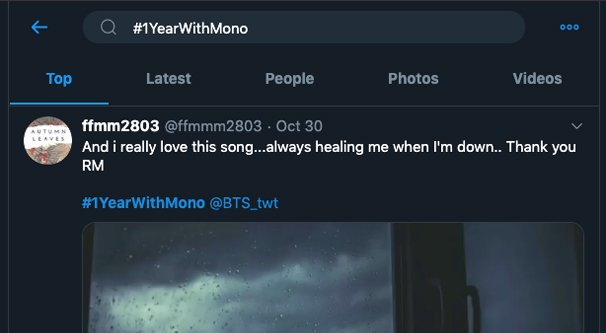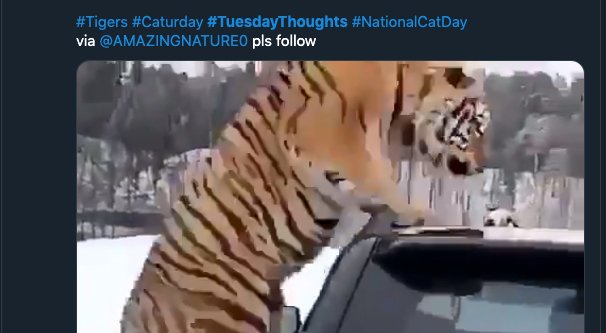6 Ways Twitter Decides What Tweets Are Trending

To some, the Twitter trending box is one of life’s inscrutable mysteries. For others, it’s an enigma that needs to be cracked. Others still think they have it figured out, and put their conclusions to use in their marketing.
In a way, all of them are right.
The Twitter trending box is interesting, because it’s different for everyone, even when you have it set to global trends. The exact content of the box changes from hour to hour, from person to person, from location to location. And yet, we can reverse-engineer the topics it includes and come up with some guiding points to figure out just how the content that shows up is chosen.
Now, I have to put forth a disclaimer here: I’m not one of Twitter’s engineers, and I don’t have a look inside the curtain. I’ve distilled down six different types of Twitter trends and how they work, but I could be wrong on a few or all of them, for all I know. If any actual Twitter employees, who know definitively how this all work, want to shoot me an email, I’d be more than happy to have a nice discussion, though! Wink, wink.
The first kind of trend on Twitter is the globally active and relevant piece of content, topic, or hashtag. Globally relevant trending topics can be things like the protests going on in Hong Kong, or something relevant to the global political stage, like TurkeyWon.
Now, obviously, when you’re looking at trending topics on a global level, most of them aren’t going to be relevant or interesting to you. You can even see this yourself if you go to Twitter. In the trending box, click Change, and then click change your location. Choose “worldwide” and save it, and you’ll see a box of trends that is full of stuff that doesn’t matter to you.
For example, I see at least three trends in Arabic, which I can’t read, and two that are relevant to topics only of interest to residents of other countries. Even the TurkeyWon tag up there is largely in non-English content. Only a couple might be more closely relevant, and even those don’t directly impact a humble resident of California, like #BrexitBill.
Globally active tags, thus, aren’t very useful. When you have tailored trends on twitter, you’ll rarely see any of these unless the tag also happens to be relevant to your area. I would venture to guess that just about every Twitter user in Britain and possibly throughout much of the EU will see BrexitBill as part of their trends on the day I’m writing this. Most other people, probably not.
This is why Twitter allows you to choose a more narrow range for your geographic topics, down to the city level.
To use some American topics here, I can see topics such as Willie Brown trending. This is a trend because someone famous, a former cornerback of the Raiders and a football hall of famer, died. This is an important piece of content for football fans and is being tweeted about by a large number of accounts, and so the topic is trending.
Another topic, relevant on the day I’m writing this, is the hashtag #lynching. Normally this isn’t a great topic to be searching, so I urge you all to exercise some caution when researching this kind of topic, since some of the content can be pretty gruesome.
In this case, the topic is trending because Donald Trump ranted about being lynched by the media, and has received a ton of backlash about what lynching actually is and how it affects real people throughout history and even in the present day. It has been tweeted about by many famous accounts, including a large number of active politicians and verified users.
I would venture to guess that users in non-US locations aren’t going to see these kinds of topics in their trending box. It’s relevant in the United States because prominent people are talking about it, and lots of people are talking about it. Not coincidentally, those are two other factors.
2. Topics in Use by Numerous People
As I just mentioned, one of the two major factors that can boost a piece of content into the spotlight is having a lot of people talking about it. Now, Twitter tells you a rough idea of the activity of some trends when you see them in the box, but not of all of them. I can see, for example, that some hashtags in my current trending box have around 6,000 tweets pushing them up.
Others have as high as 250,000 tweets, such as “#1YearWithMono”. That topic, by the way, seems to be a retrospective on a mixtape that came out a year ago. It’s apparently very raw and emotional for the people who experienced it, though it’s also Korean so I’m not really getting the personal value out of it myself.
Another example from my personal feed today is “mama pulte”. I don’t know what this is, but upon investigation, I learn a few things. First: Bill Pulte is a philanthropist who gives away money on Twitter frequently. Second, Bill’s verified account with just under a million followers asked his followers to mention “mamma pulte”. Third, since people strive to get Bill’s attention to get some money from him, this immediately sent thousands of people tweeting the keyword. Is it sensible? Is it a worthwhile trend? That’s for you to decide.
If you’re wondering why you can have a world where both a topic with a quarter million tweets and a topic with six thousand tweets stand side to side with equal prominence, well, that’s where the other part of the equation comes in.
The second factor is when a topic is being covered by popular accounts. Popular accounts can be accounts with a few tens or hundreds of thousands of followers, all the way up to accounts with tens of millions of followers. There are two ways to tell if a piece of trending content is influenced by this.
The first is when it has a low number of tweets about it, but it’s still trending. The Willie Brown trend from up above is one such topic. It’s the one with under 7,000 total tweets while I’m writing this, though even in the last half hour or so it has shot up by 500. The thing is, most of the accounts tweeting about it are accounts that have large numbers of followers or are verified, because they’re sports journalists, sports team accounts, and other such prominent accounts.
The second is if the keyword or topic doesn’t have a number of tweets relating to it, but it does have a name of a famous person under it. For example, the lynching tweet has the name of a politician under it when I see it, because that’s a politician locally relevant to me who has tweeted about it. Another one, the generic #TuesdayThoughts – I’m writing this on a Tuesday, why do you ask? – has Neil Gaiman tweeting about it. Gaiman’s following alone can be enough to kick some topics into trends.
4. News Article Keyword Matching
This next factor is relevant to Twitter trends but is a sort of unspoken modifier to them. See, Twitter doesn’t just monitor its own platform for trends, it looks outside it. This is easy to do, because the outside world comes to it. News articles are linked on Twitter en masse, and as such, it’s easy for Twitter to see that a topic might be trending when a hundred different articles about it are all being shared thousands or hundreds of thousands of times.
Twitter can then analyze this flow of content and look for keywords that are shared in common between them. It can then compare this list of derived keywords with the keywords that are being used in tweets about the topic, to find tweets relevant to that topic. If the topic has a sufficient volume and interest, particularly among large-scale accounts, it can then make that a trend.
The lynching hashtag is, again, one of these tags. Not everyone tweeting about the topic is using the hashtag, but enough people are that Twitter was able to identify it as a trend.
Of course, once a trend with a keyword takes off, people flock to it and start using the keyword, so it’s harder to find the content that set it off to showcase that it wasn’t necessarily a hashtag in use at the start. Even so, prominent content about the topic that doesn’t use the trending keyword can still be categorized as relevant to that topic and added to the topic feed.
This all sounds like supposition, right? Well, in a way it is, but at the same time, when you click on a trend you are given a series of headers you can check. These are the usual search headers, for things like the top content, the latest content, the people posting about the content, and so on. One of them, though, is news. Twitter is well aware of the news and the impact it has on trends, and is able to filter it appropriately even if it’s not specifically about the exact keywords. There’s no way they don’t take it into consideration.
5. Personalized Trends
Now let’s bring things down to a more intimate level. See, the trending box isn’t always just about national or global level trending topics. In fact, many of you might be wondering why I’ve focused so much on it. Well, it’s because that’s the easy part, and the part that gets the hundreds of thousands of tweets.
Tweets and topics often trend with only a few thousand messages, and sometimes even less. So why is that? It’s because Twitter has been trying for years to turn into Facebook. Time after time, they try to switch to an algorithmically sorted Twitter feed, and backlash pushes them back into a more chronological feed.
You can read more about the organic sorting feed and algorithm here, if you’re interested. I am, but it’s a topic for another time.
Tailored trends are primarily impacted by your geographic location down to your city or regional level, but they also develop over time based on the content you post, the content you interact with, and the trends you click on. Twitter isn’t anywhere near as sophisticated as Facebook with tracking this kind of personal engagement, but they can at least take into consideration things like the people you follow and the content they’re tweeting about.
6. Paid Trends
Finally, trends aren’t always organic or a reflection of what is really trending on the platform. Everyone knows that you can pay to promote an account, or pay to promote a tweet, but did you know you can also pay to promote a trend?
Twitter has promoted trends as part of their ads platform. For a fee, you can choose a trend to promote for up to 24 hours of high-intensity attention. Since trends can get thousands if not hundreds of thousands of tweets in a single day, this can be an extremely good way to get a lot of coverage very quickly.
Promoted trends are, of course, flagged as promoted, including a label for the company that is promoting it. This way you can tell if some otherwise generic tag is being promoted by a company with interest in it, and the like.
Promoted trends are not accessible to most of us, of course. To get a trend promoted costs quite a bit of money, so much so that Twitter requires you to talk to an account manager to do it, and most of us don’t even have account managers.








